The shipbuilding facility will be able to build two frigates at the same time.
Babcock also unveiled plans to recruit 500 workers for its Type 31 frigate programme as the build of its new state-of-the-art assembly hall, known as ‘the Venturer Building’ is completed at its Rosyth site.
https://twitter.com/geoallison/status/1465662445796696074
The announcement was made as Douglas Chapman MP, employees, industry representatives, local school children and trade unions gathered to witness the commemorative ‘topping out’ ceremony at the new facility.
“The event included a demonstration of two 125 tonne gantry cranes, which will be used to assemble the frigates, with local schoolchildren adding the final touches to the facility by helping to plant bulbs and shrubs around its perimeter.”
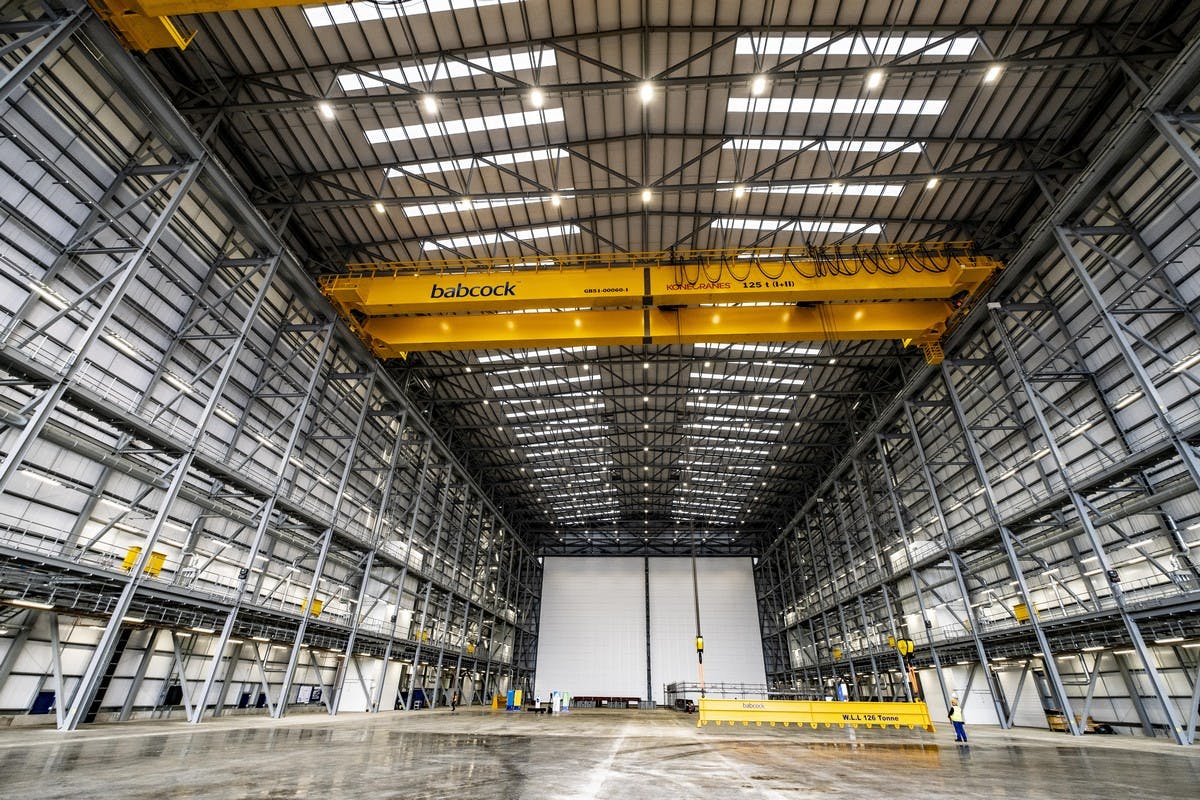
Measuring 147m x 62m x 42m, the Venturer Building will initially be used for the assembly of the Royal Navy’s Type 31 frigates, providing a facility that can support UK and international shipbuilding activity for decades to come.
“As the Type 31 programme continues, the fully covered hall will house two frigates for uninterrupted, parallel assembly and will support increased productivity gains through improved access to the platforms and digital connectivity.”
The firm say that the initial recruitment drive to support the programme will include a variety of trades including welders, fabricators and mechanical and electrical fitters as well as production support operatives.
“The announcement sees the 500 new roles contribute towards the direct workforce which will peak at the height of the programme at around 1250 people across the UK and will support a similar number in the extended supply chain.”
Will Erith, Chief Executive of Babcock Marine said:
“We are delighted to mark St. Andrew’s Day by celebrating the completion of The Venturer Building which builds on our exceptional heritage in Scotland, delivering a very real step change in capacity and capability for modern UK shipbuilding. From the start of this programme, we’ve been focussing on prosperity, supporting both the UK and local economies and so it is great we are also announcing 500 new roles on the same day who will directly support the Type 31 programme.
I would like to thank everyone involved in the construction of this fantastic building and especially our contractors Robertson Construction. This moment demonstrates further progress in the Type 31 programme and adds to the significant investment over the last decade at our facilities in Rosyth; bringing advancements and efficiencies into manufacturing, build and assembly processes.”


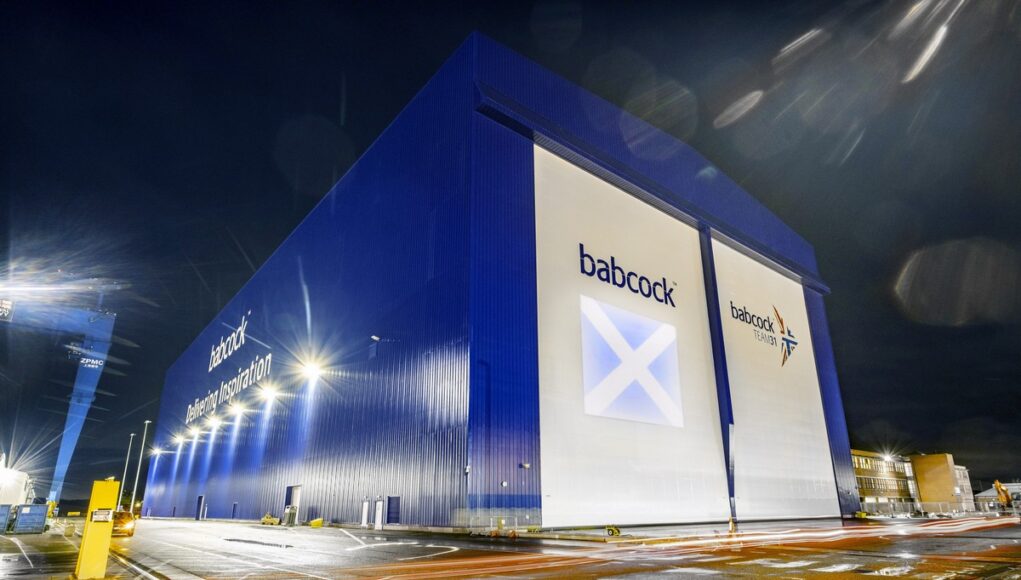
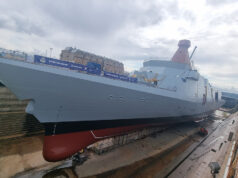


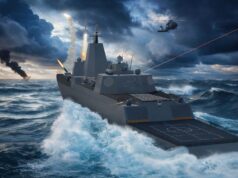
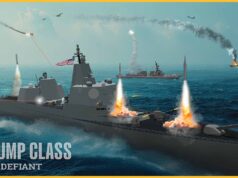
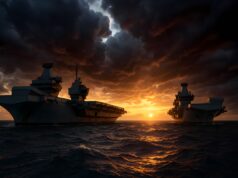


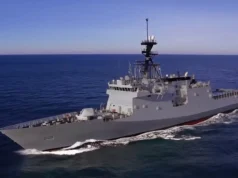

Who thinks that it’s a few meters to short? It may be long enough for the Type31 but most Destroyers and Frigates are over 150 Meters and we don’t know what the future holds.
Will be like the old base hangar at Brize Norton 🙂 perfect for VC-10’s but had to build extension block on couple of bays when they bought Tristar to cover the tail. Or they build from the bow backwards and when it gets to long they open the door an stick the pointy bit outside, use some big plastic door flaps to keep inside dry?
Don’t forget you can put a conservatory on without planning permission, so there’s always that option…..
Order(s) first, shed lengthening second.
more than five ad produced double quick
To be fair it’s a frigate factory not a destroyer factory, architects sticking to the brief.
To be fair the T26 is 149.9m long…
Cheers CR
Seems strange they wouldn’t push it to a little over 150m just to be safe, but regardless the T26 is exceptionally large for a ‘frigate’. Then again with the extra work space needed the expansion would likely have to be quite substantial to accommodate the UK’s larger warships.
It will be enough for the Type 31s and most likely Type 32s. That means it is set for shipbuilding for the next 15+ years while other processes for the Type 26s are already in place. There is no demand for a factory for these larger ships, so this is fitting for the task it needs to do. Any larger task isn’t really needed now or within the foreseeable future.
designs for the next destroyer type will no doubt take that in mind
To be fair the T26 is built by BAE who are also extending their covered facility at Govan.
Agree Ron, get them ships built plus some more, hopefully! Very good news for the industry and especially local employmemt.
but don’t hang about, the nation needs them now. not eventually and more than 5 t 31’s
Morning PS. A small overlap of say 5 metres would have cost very little extra over and a little extra working space is always good for efficiency and comfort
Thank god we have a sensible answer
Bigger ship bigger target and as automation is taking over from crew then smaller ships may be the future as they could deliver more for less mass and cheaper so allowing a few more to the fleet as someone has to be around to defend us,
I would think that you could still do a sizeable modular build of 1 larger ship at a time?
future proofing should be part of the design schedule
These big sheds are relatively cheap to build – Amazon and the like build plenty. This one is designed specifically for Type 31, and presumably the anticipated exports and follow-on orders for Type 32. George reported recently that BAE are extending their sheds at Govan – and given T26 is BAe’s product – and they must be the front runners for Type 83 – that is where a larger shed is needed.
I agree they are very cheap to build.
But T31 was build down to a cost limit. So cheeseparing of the associated costs is to be expected and to a certain extent was the point of the program: no gold plate. So spending ‘extra for the future’ was not really part of the agenda.
In any case the thing can easily be extended whilst it is in use and the internal wall taken out afterwards. Amazon do that all the time when their sheds are extended.
especially with th t45 replacement due on the architechts tables soon
Shouldn’t there be the start of a Type 31 inside? First steel was cut a couple months ago.
I wondered about that!
As this is a newly opened assembly hall it may be a couple of days, figuratively, before Babcock start shifting parts inside. Let them take a breath!
Looks like they have just cut some steel but not started the actual build of the ship itself, maybe there are not enough steel sections to start fabricating the hull yet.?
steel is cut and assembled into manageable sized units in assembly bays out side of the main hall they are then transported to the main hall to be made into larger units , it could be a while yet before sub units arrive in the main hall for final assembly.
Indeed anyone who follows SpaceX will see a similar process. Oh and they are building a new bigger ‘high bay’ final assembly building in about 3 to 4 months so I’m sure an extension here can be done as and when desired though depending on what happens circa 2023 that may be never.
Here”s the man who knows!
Thanks Davy 👍
Exactly so.
Most likely steel being cut in another shed with some small sections being built there as well with plates already cut.
keep up ron its hull is laid
That’s a big 5 a side pitch!
could fit full size pitch in!!!
Not if you’re playing Aussie Rules 😉
no big deal it IS in scotland! bit bit for a scottish club
Good news. Need to crack on with the ships. Thought provoking speech today on China threat from the Head of MI6.
firstly – well done Babcock to have done something in 18 months that BAES has been promising for years.
I do have a query though, why didn’t they build this over the 3 dry docks (inc the one with the mega crane in it) where the ships could be floated out simply.
Wouldn’t this be more efficient?
Was thinking exactly the same with regards to BAe at Scotstoun and Govan. Cant believe that they still can’t build a full ship without wheeling it out in bits to put it together. Think, only now, that they are looking to extend the sheds at Govan.
A bit in, out, shake it all about at Bae makes you wonder if they have their heart in it.
That dock needs to be kept available for QE class refits.
Surely another reason to cover it, especially if Babcock are looking at the multi role and solid support contracts.
The cost to bill a shed that covers the crane would be enormous. The crane is needed to move blocs brought in either by sea transport or from fabrication on another part of the site.
need a bigger shed. than this
could the halls at devonport have been extended to do a lot of the job?
Meanwhile, over in Bocca Chica, Musk just throws up 85-90m high facilities with no fanfare at all.
This is a site for UK defence. The world doesn’t revolve around him. Only his cringeworthy fanbase do that.
Some Scottish politicians made a great noise about the promise of a frigate factory on the Clyde being broken. Well they now have two, one on the Clyde and one on the Forth.
They will never be happy, or indeed admit the truth of that reality.
The frigate factory was a bae idea and ithat idea still doesn’t exist at the Clyde. From memory I think the plan was if mod order 13 frigates BAE would close govan and build a frigate factory at scotstoun. Mod said no so both shipyards still open and they are paying more per Frigate.
Correct 👍
‘Smoke screens’ that actually ‘signal the end’ for Scottish ship building (©SNP 2021).
Seriously, 500 new jobs and more to come one suspects in the supply chain. More bad news?
they better start banging out the orders smartish
and see how quickly the t31 class can be produced
Babcock built this within the price quote, presumably thinking that such investment would lead to great cost savings and future orders.
Bae appeared to be wanting hmg (ie the taxpayer) to fund their shed in addition to the quote for the ships.
Whilst I think type 31 will be a great platform going forward, and possibly more practical in most applications, I wonder if we would have had more type 26 if bae had built shed themselves and reduced type 26 build costs, which would equate to short term cost for linger term gain.
Like it or not this for Babcock is a key expansion of their core business whereas for Bae it is something of a sideline I suspect, which sometimes I reckon they wish they weren’t actually involved in, but are scared of the fall out should they withdraw.
The problem with all of the A140 family is noise. Fundamentally there aren’t quite ships so are of limited use for ASW. The move to off board sensors will help to a degree but for the foreseeable future subs will be best hunted from ultra quiet ships.
With modern USV technology there should be significantly cheaper alternatives to pulling a towed sonar array through the ocean than a £1bn frigate for the base platform. Realistically if we are hunting subs in the North Atlantic and South China sea, 8 frigates will only be able to cover a drop in the ocean. They are far to expensive to perform the task they are required to perform.
Babcock’s “building within the price quote” and Bae “wanting HMG to pay” amounts to exactly the same thing 😀
Has this Venture no pun intended on the old footprint of the Hunt and Sandown Shed ?
The old shed is still there. It’ll still be used for MCM support, as well as the Ukrainian order and T31.
Cheers Lusty ,the new shed will undoubtedly have the Automatic Bird scarers fitted if your unaware of them of an evening you don’t just spill yer coffee so too speak
I appreciate the warning, haha.
I hear RAF Marham will be fitted with automatic rice dispensers to dry out lost aircraft. 😉
Got too find it before the Rice eaters locate it 😋
😂😂
I heard they were just going to put a few bottles of buck fast on the roof and let the local teenagers scare the birds away.
Buckfast, now that’s a blast from the past didn’t think that little number was still going MS
Fake News !
Everyone knows that there`s no shipbuilding in Scotland.
BETRAYAL !!!!!
There speaks one who knows the truth!
Babcock must be fairly certain of more work now they’ve got their foot in, otherwise it’s a bit daft building a shed that size capable of side by side builds surely.
I’d not be surprised if it paid back for just the T31.
The issue is cost certainty.
If you stick the weather variable into the costs matrix is goes all over the place.
In construction, as in shipbuilding, productivity tanks if you are working exposed. And costs spiral if you have to try and shrink wrap the world to do climate control. It can be done, it is done routinely, but it is another timeline to work in.
Much better to do what Babcock have done and create a controlled working environment where a sensible ambient temperature and no wind can be achieved.
Every variable and task that you can remove from a project increases cost certainly and improves timelines.
We’ve all heard of Beds in Sheds with the influx of Asylum seekers job done curtesy of babcock
Two frigates at a time? That is so sweet! And the money will come from where? Oh, OK, even though I’m not a UK-er, I’m willing to contribute my penny jar.
This should have been built on Tyneside.
i’m interested to see when the first ship is comissioned exactly how near the250 million pricetag it has actually been and just how much competative it makes the u.k yards